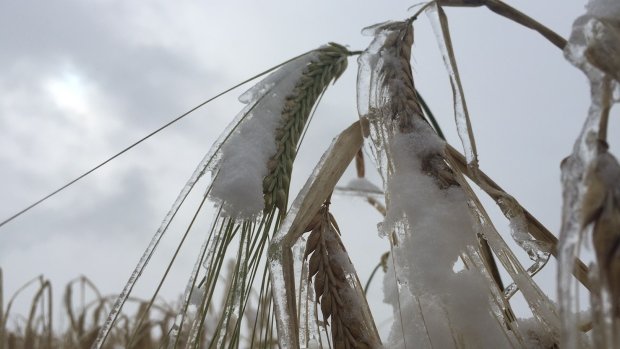
On Oct. 1, Fort St. John received 23 centimetres of snow, The old record for the day was six centimetres set in 1954.
"This is probably the most severe one-off weather condition that I can remember in the last 40 years," said Rick Kantz, president of the B.C. Grain Producers Association.
Kantz said harvest had already been difficult this year.
"[The fields] were extremely wet before the snows came ... so instead of travelling across the surface, you're sinking in."
He said it's been raining and snowing since then, and the weather has forced grain farmers to leave anywhere between 10 to 20 per cent of their crops in the field.
"You're down 20 per cent of your income ... you might have enough to cover expenses but it doesn't leave much for wages to carry on," he explained.
Potential price hike for consumers
Similar weather conditions have frustrated grain farmers across the prairies.
In Saskatchewan, the harvest is well behind schedule with much of the grain-belt pelted with double the rain it usually receives.
In southern Alberta, farmers are waiting for warmer Chinook winds to dry their crops so they can harvest, with one expert saying nearly a third of the province's crops need to be harvested.
Kantz said the low harvest this year could mean prices on goods from cereal to livestock feed could rise.
"There are some small increases happening already because this is happening already, right across Canada," he said.
B.C.'s Peace Region accounts for about 80 per cent of the province's field crop production, and its main crops are wheat, barley and canola.
With files from Andrew Kurjata and Daybreak North



Reader Comments
to our Newsletter